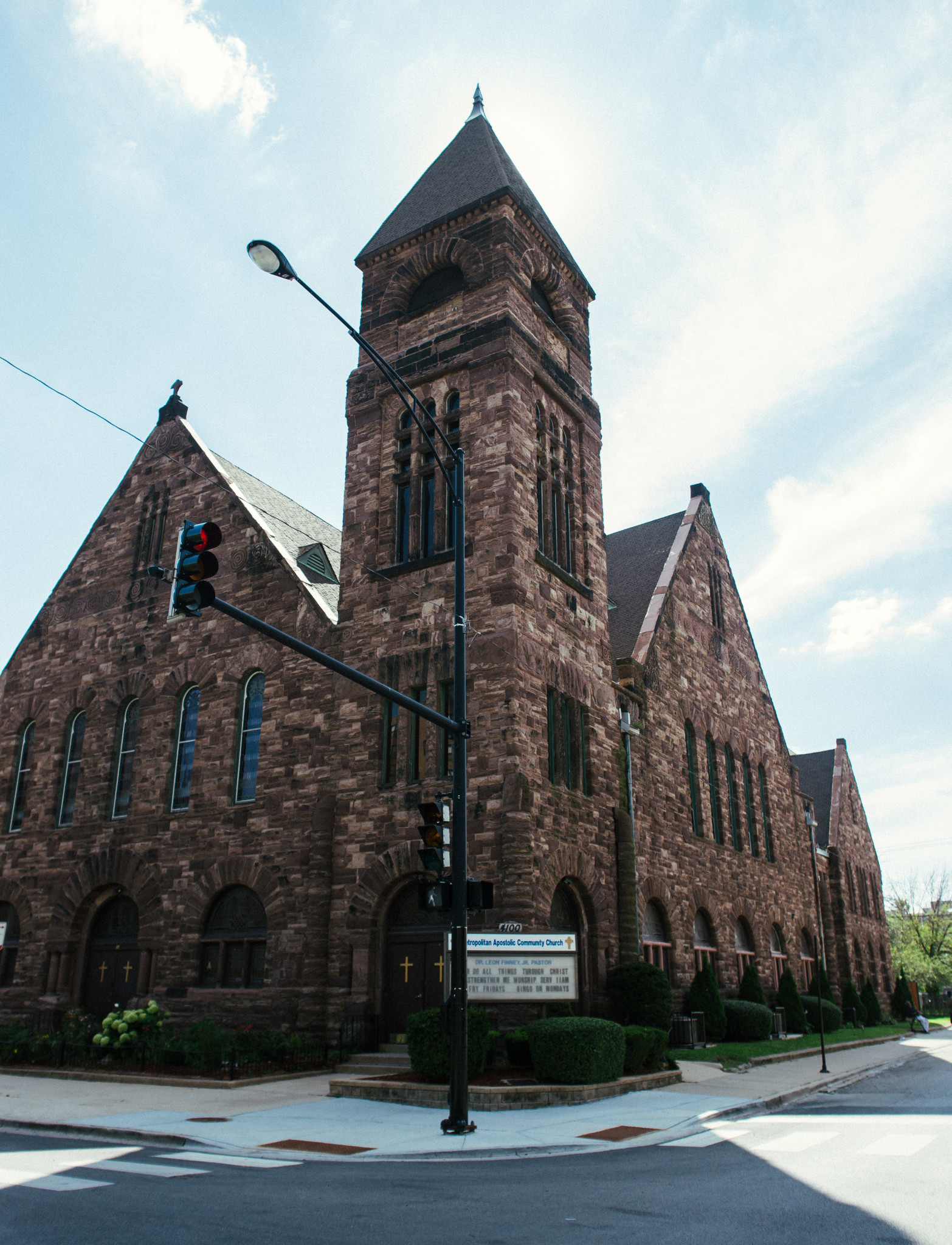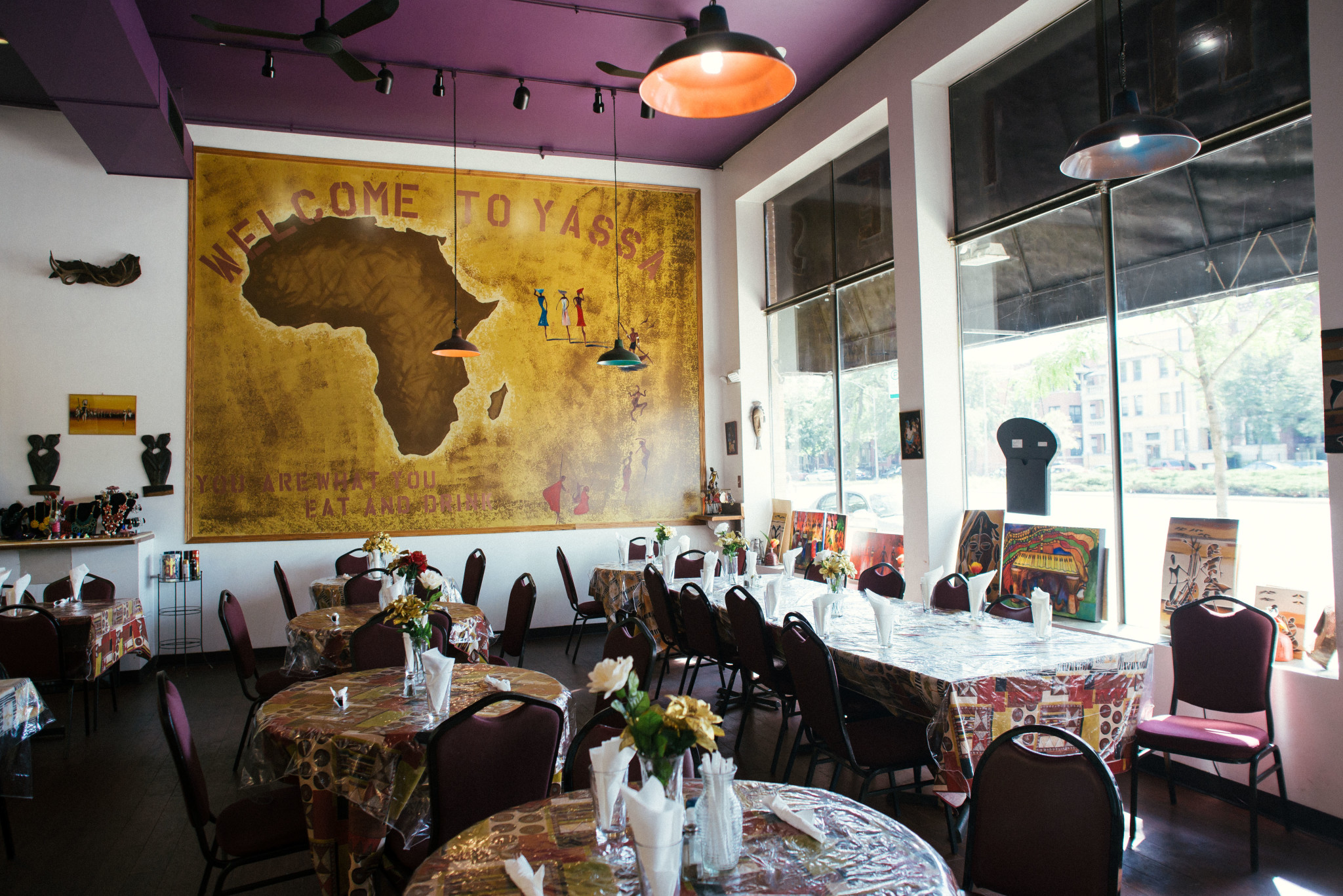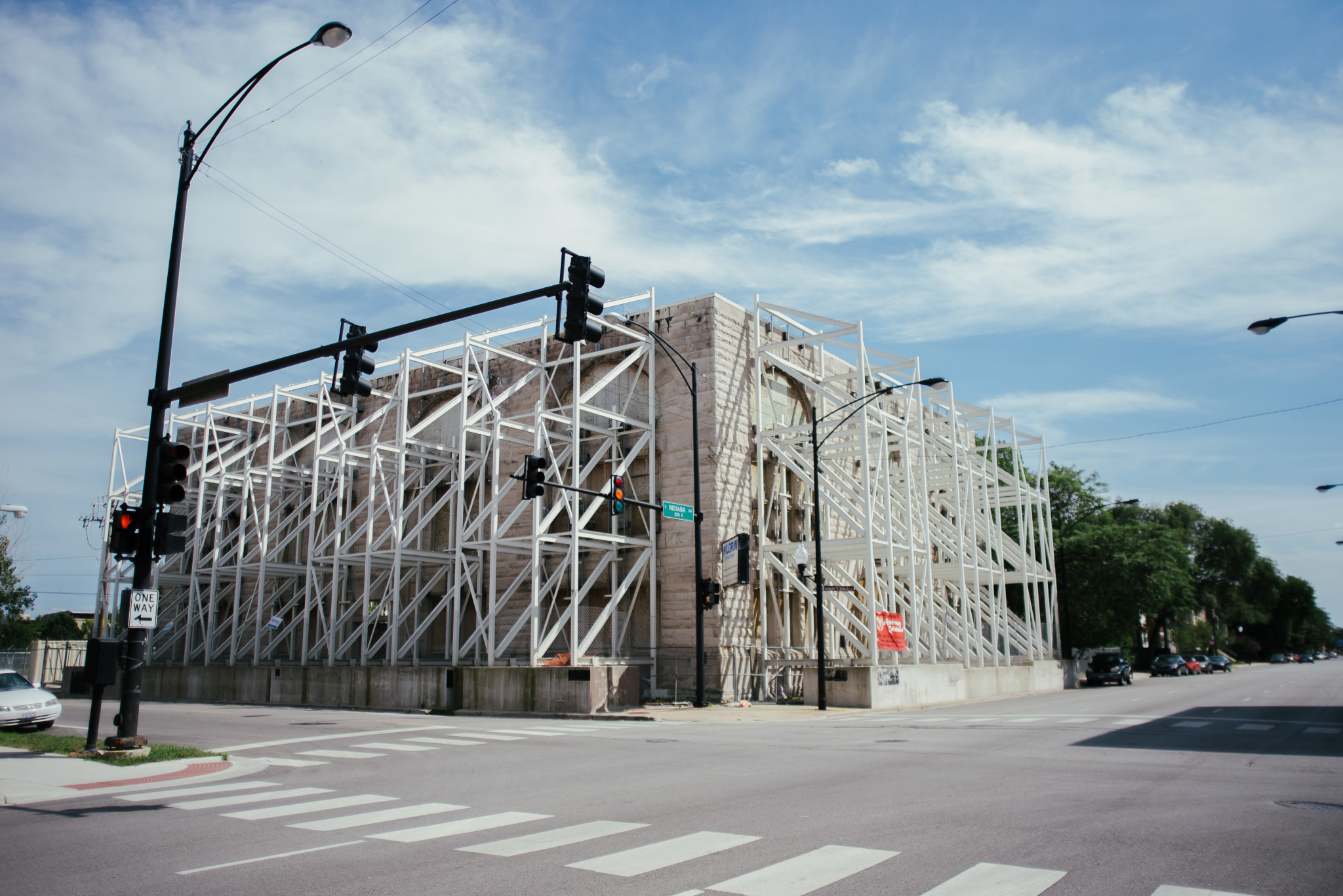Millions of African-American migrants came to Chicago, and their descendants carry the pride of Bronzeville. There is no other place in the world like Bronzeville. Within a five-mile radius you can find historical sites of interest that chronicle the explosion of gospel, blues, jazz, abolitionism and grassroots civil rights activism. Bronzeville’s history spans from the late 1880s to present day as the most documented landscape of political, economic, art, and cultural influence. Blacks who lived in the early days of Bronzeville survived the 1919 Chicago race riots. The generations that followed withstood restrictive covenants, the dismantling of public housing, and the closing of more than forty schools. The tenacity of the families and stakeholders who call Bronzeville home is unmatched. In spite of every conceivable tactic to eradicate Bronzeville’s rich legacy and its people, Bronzeville lives on as the testament of what champions can do.”
–Sherry Williams, Bronzeville Historical Society Founder
Bronzeville, perhaps even more than other neighborhoods in South Chicago, is enveloped in its own history. Banners commemorating the

“Historic Black Metropolis” flutter from streetlights, and signs proclaiming historic sites litter its blocks. These trace their origins to the metropolis’s heyday in the mid-twentieth century, when the children of the Great Migration built a commercial and artistic world of their own, centered on the corridor of State Street that stretches from 47th Street up to the modern-day South Loop. Today, some of the buildings are gone, but the people are still familiar: Margaret Burroughs, Ida B. Wells, Gwendolyn Brooks all lived and worked here; Nat King Cole, Miles Davis, and Duke Ellington were regulars at the theaters and clubs.
Bronzeville’s name dates back to the 1930s, from a description of the skin tone of local beauty pageant participants (“Bronze beauties of
Bronze-ville”, as the saying went) by an appreciative editor of the Chicago Bee, but only gradually became popular––any old-timer will testify that nobody called the black metropolis Bronzeville. And the neighborhood itself has expanded beyond its historic borders; modern Bronzeville is an enormous and diverse area, whose boundaries vary depending on whom you ask. Tree-shaded rows of beautiful old greystone houses on Michigan Avenue give way to vacant lots where the Robert Taylor Homes once stood on State Street, then to the glassy campus of the Illinois Institute of Technology. On 47th Street, rows of shops bustle during the day just as they did in the 1950s, but swathes of land further north lie silent and empty. Continuing north, encroaching on the South Loop, the Prairie Shores apartments form an enclave of their own.
Despite the variety within its boundaries, Bronzeville has a strong community identity, perhaps due in part to its past. Local organizations like the Bronzeville Retail Initiative have taken a lead in attracting commerce back to once-deserted corridors like 43rd Street. Over the summer, over a dozen restaurants, art galleries, and other businesses banded together to participate in the third annual Bronzeville Summer Nights, showcasing the many attractions the neighborhood has to offer–with a free trolley ride to boot. (Peter Xu)
Best Resurrection
In November of 2014, a roof fire destroyed Senegalese restaurant Yassa’s 79th Street building. “It was a dream come true,” recalls Madieye Gueye, who founded the establishment with his wife Awa. “We had been wanting to move for a long time,” Madieye says. “But it is so expensive to move a restaurant.”
When Yassa opened in Chatham in 2004, it was the only Senegalese restaurant in Chicago, and it remains the only one on the South Side. It would have been easier to establish a spot up north, where African restaurants dot trendier areas, but Madieye and Awa wanted to set up shop on 79th to remain close to African-American communities. Yassa experienced some success in its original iteration, even appearing on WTTW’s Check Please!, but business was tough.
The fire opened up an opportunity. When Yassa reopened in January at their current Bronzeville location, they were welcomed into the

neighborhood. “There weren’t very many sit-down restaurants in the area, so people were very happy to have us,” notes Madieye.
The restaurant’s arrival was also well-timed. “They call us part of the Bronzeville revival,” Madieye says, referring to the efforts by organizations like the Bronzeville Retail Initiative and Urban Juncture to spark commerce and development in recent years. “Now all kinds of people come to us from north, south, east, west. They come and see what Bronzeville has to offer. It’s a very historic place for African-Americans.”
Yassa’s draw comes in part due to its comfortable atmosphere. Madieye and Awa, Senegalese immigrants from the Wolof ethnic group, take
pride in their culture’s hospitality. To them, this aspect is as important as the food. “Creating the right feeling in the restaurant again was the hardest part of the move,” admits Madieye. “We want customers to feel like they’re at home.”
To this end, the dining room is decorated with Senegalese and other African art painted in vivid earth tones, including an expansive map of Africa on one wall. The tablecloths are printed with colorful designs, and Senegalese dance music thumps cheerfully in the background. The hominess is palpable; it is hard to imagine the place empty.
A major highlight of the menu is nem, a fried egg roll-like appetizer influenced by Vietnamese cuisine, denser and more brightly flavored, than any you would find at a typical Chinese-American restaurant. Of their entrees, the standouts are the accents eponymous yassa dishes, marinated meat or fish prepared with onions and a sharp array of spices served over aromatic white rice. The fish, a tilapia cooked whole, is particularly flavorful. Be warned, however: the bones are served intact, so the dish is not for the faint of heart.
Yassa, 3511 S. King Dr. Sunday–Thursday, 11am–10pm; Friday–Saturday, 11am–11pm. (773) 488-5599. yassaafricanrestaurant.com (Peter Xu)
Best Diasporic Display
Faie Afrikan Art
Faie Afrikan Art is a labor of love by owner Faye Edwards, and its interior shows every drop of that affection. Vibrant works are hung, draped, and propped against every surface in the room. All of them are by African-American or diasporic African artists, including recent work by some on the continent. A low ceiling and brown brick walls create a cozy interior, and visitors freely browse the art at their leisure. The collection is constantly cycling, with new exhibits coming in as some older pieces remain behind. The basement, holding even more color, is also open to the public. While the pieces are for sale, the gallery is primarily for the neighborhood, with frequent open events in which artists chat about their work over tea. At all other times, Faie’s curators offer their own friendly guidance. The current exhibit is “Stained, Blown, Fused: The Artistry of Glass in the Diaspora,” featuring works by Sebron Grant and Ted Feaster.
Faie Afrikan Art, 1005 E. 43rd Street. Wednesday–Friday, 12:30pm–6:30pm; Saturday, 12pm–6:30pm. (773) 268-2889. faieafrikanart.com (Peter Xu)
Best Homemade Milkshake
Tony’s Carryouts
Of all the advertisements papered and scrawled over every inch of Tony’s Carryouts, there is one most important: “ICE CREAM HOMEMADE SHAKES,” it announces, and ignore it at your own peril. Tony’s is an oasis in an otherwise conspicuously milkshake-bare stretch of 47th Street, and the shakes are fantastic: homemade and full-bodied, available in chocolate, strawberry, pineapple, and vanilla, and the perfect mixture of thick enough to be satisfying and milky enough to come easily through the straw. Of the other offerings on the menu, all of it is cheap, and much of it is good: the fries and burgers are warm and filling, though the tacos ought to be avoided. Tony himself is often around to chat with customers.
Tony’s Carryouts, 101 E. 47th Street. Monday–Sunday, 10am–9pm. (773) 285-5235 (Peter Xu)
Best Lasting Art Center
South Side Community Art Center
Many glossy private art galleries have appeared in Bronzeville recently, including Blanc Gallery and Gallery Guichard—the latter even gained some notoriety in the media for a recent exhibit on racist police brutality, with a piece depicting Michael Brown’s body that was criticized as sensationalist and exploitative. But the prominence of art in the community has more venerable roots: the South Side Community Art Center (SSCAC) was created in 1940, the first museum for Black art in the country. Margaret Burroughs was among the founding artists, and over the years the SSCAC hosted luminaries such as Archibald Motley and Gwendolyn Brooks to collaborate and display their works. The center also hosts art programs for children in the neighborhood as well as a famous and long-running annual art auction; the fiftieth took place this past August. SSCAC’s primary display gallery has a historic feel to it with its dark wood paneling and Bauhaus design, but its displays are unmistakably modern, reflecting the center’s mission to “infuse history into the future of art.” The current exhibit, typically eclectic, is “Black Comic Book Heroes and Villains.” An artist’s talk will be hosted on September 26.
South Side Community Art Center, 3831 S. Michigan Ave. Wednesday–Friday, 12p–5pm; Saturday, 9am–5pm; Sunday, 1pm–5pm. (773) 373-1026. sscartcenter.org (Peter Xu)
Best Once and Future Church
Pilgrim Baptist Church
In January 2006, a worker’s blowtorch lit the Pilgrim Baptist Church building ablaze, incinerating everything save the stone walls facing

north, south, and west. Any other ruin would have been torn down, but the church is historic; designed by Louis Sullivan, the glory days of the longstanding structure came as the cradle of gospel music under music director Thomas Dorsey in the mid-nineteenth century. The congregation, which meets in a small building across the street, has ambitious dreams to restore it, including, eventually, an expanded wing to serve as a community center. The visualizations hang in the hall of their temporary building, on hold as they await civic planning and funding of the project. For now, the remnants are eerily beautiful, steel girders holding together the shell of an edifice. From the east, one can look into the ravaged interior and see vegetation reclaiming the lost ground.
Pilgrim Baptist Church, 3300 S. Indiana Ave. (312) 842-4417 (Peter Xu)
Best Apple Fritter
Abundance Bakery
Each method of turning dough, sugar, and hot oil into pure joy has its own charms, even strange marvels of modernity like three-dollar baked vegan doughnuts or the cronut. But for all our lore, there’s still nothing like a doughnut for less than a dollar, made first thing in the morning, and definitely fried. At Abundance Bakery on 47th Street, the doughnuts fill all of these qualifications. Their moist, dense old-fashioned doughnut has a cragginess and slight oiliness that leaves no mystery as to how it was cooked, and their glazed yeast doughnut is fluffy, airy, and just sweet enough. They are both overshadowed, however, by their cousin the apple fritter. It weighs about as much as a very young kitten and is absolutely chock-full of cinnamon, walnuts, and huge chunks of apple. This is one doughnut that more than justifies its three-dollar price tag and the logy feeling eating even just half of one produces.
Abundance Bakery, 105 E. 47th Street. Monday–Saturday, 6am–6pm. (773)373-1971. abundancebakery.net (Nora Dolliver)


Worth noting that Pilgrim Baptist building was originally designed as a synagogue and housed the KAM congregation (Chicago’s oldest) until 1924. Best once and future “house of worship.”
good info